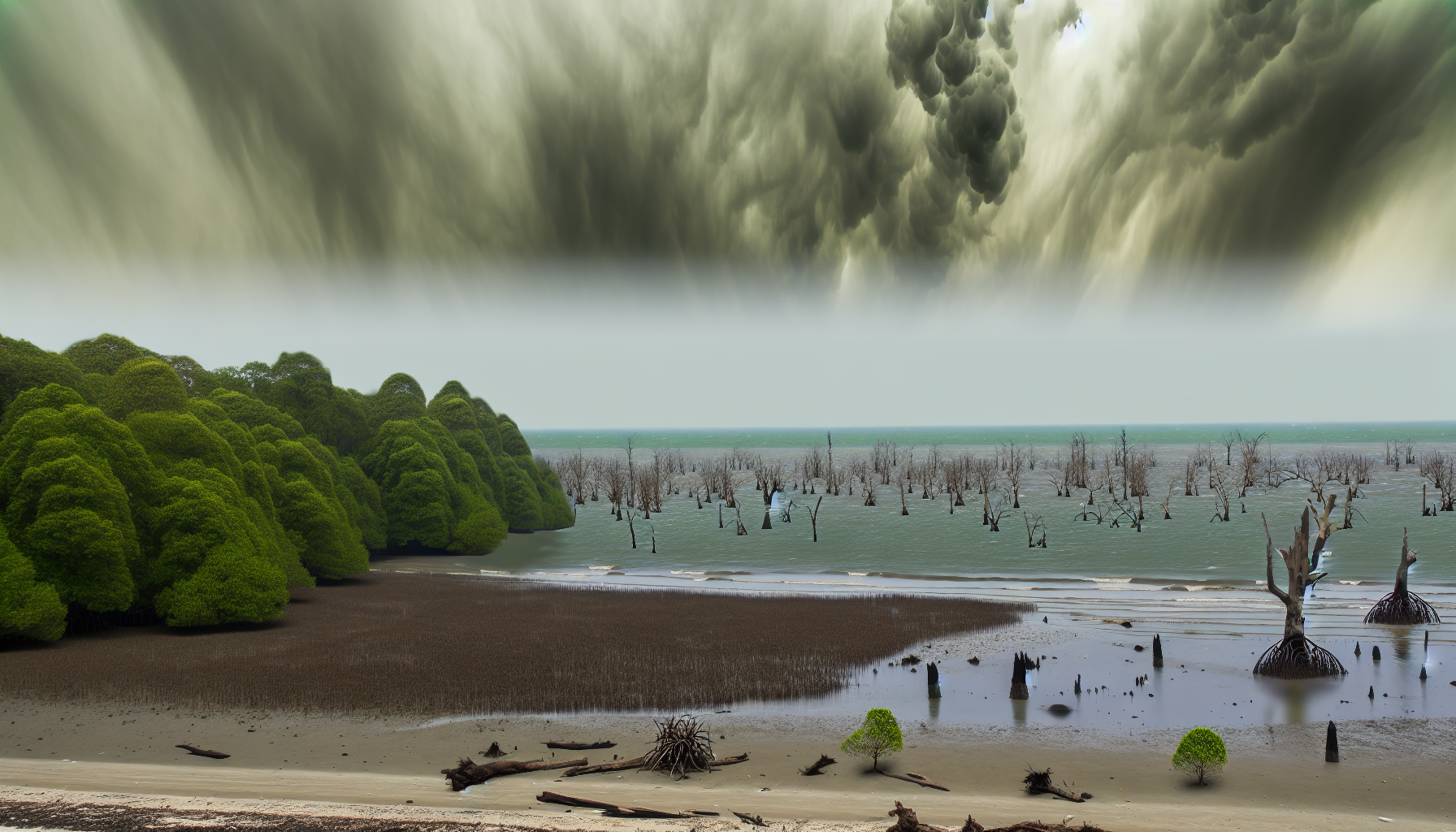In a world where the vestiges of nature’s resplendence are but mere whispers among the roaring winds of change, the mangroves stand silent, their roots sunk deep into the lifeblood of the earth, grasping at the very fabric of a planet gasping for breath. The Last Stand of the Mangroves marks not just a fight for survival, but a somber parable for our own existence in this bleak and withered era.
‘Nature’s Barricade Against the Tide’—so they have been eloquently dubbed, nestled in beleaguered districts along coastlines that once teemed with iridescent life. These coastal champions, with their tangled roots, are the unsung bulwarks against the fury of the rising seas, an enraged beast born from humanity’s own hubris.
But now, in the twilight of their guardianship, the mangroves face a peril no less dire than the waters they bravely parry. The encroach of salinization, the insatiable maw of industrial development, and the ruthless scythe of climate extremes have laid waste to what should have been an enduring citadel.
Consider the Graveyard of Giants, an expanse where the carcasses of once-mighty mangrove trees lay strewn like the bones of fallen warriors in a forsaken battlefield. Here, amidst the desolation, the air is thick with the scent of brine and decay—a fitting requiem for a dying world. The shrill cries of gulls, scavenging among the detritus, serve as a grim reminder of the casualties in this relentless assailing by the elements.
The irony is as potent as the putrid waters nibbling away at the roots; these coastal defenders have protected human settlements from the scourge of storms and surges, only to be betrayed by the very civilization they shielded. Fishermen, once reliant on the bountiful nurseries nestled in the labyrinthine prop roots, now stare out into a barren horizon, bemoaning the loss of their progenitors’ way of life.
Yet, in the midst of the desolation, moments of haunting beauty manifest. The sun, in its ephemeral descent, casts an otherworldly glow upon the brackish waters, painting the skies with the hues of a fire that seems to burn in defiance of the inevitable darkness. This fleeting spectacle belies the grim truth: that the twilight of the mangroves heralds an eco-catastrophe of epic proportions.
The resilience of these stoic sentinels is not infinite; with each passing storm, each sweep of salted water, the mangroves recede like the last beats of a faltering heart. If their demise is written in the unyielding script of our current narrative, what then shall become of the forsaken shores they once so diligently guarded?
Confronting this stark reality requires a deep, unsettling introspection. It is an invitation to witness the stark devastation, not as detached observers, but as contrite contributors to this dirge. Will the Last Stand of the Mangroves be etched into the annals of history as a lament for what was, or can it instead ignite the latent spirit of conservation that slumbers within our conscience?
This chronicle ends not with answers, but with the echo of the mangroves’ plea—a haunting reverberation through the corridors of time, imploring those who walk the earth to heed the lessons etched into their twisted boughs. In the wake of the mangroves, what remains is a testament to nature’s relentless will to endure, and perhaps a pitiful reflection of humanity’s chance to redeem itself in the brief moments that remain.
